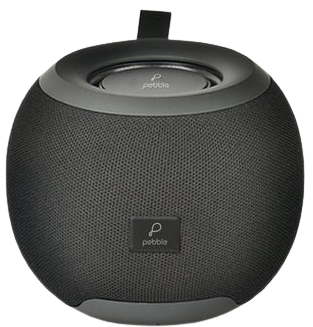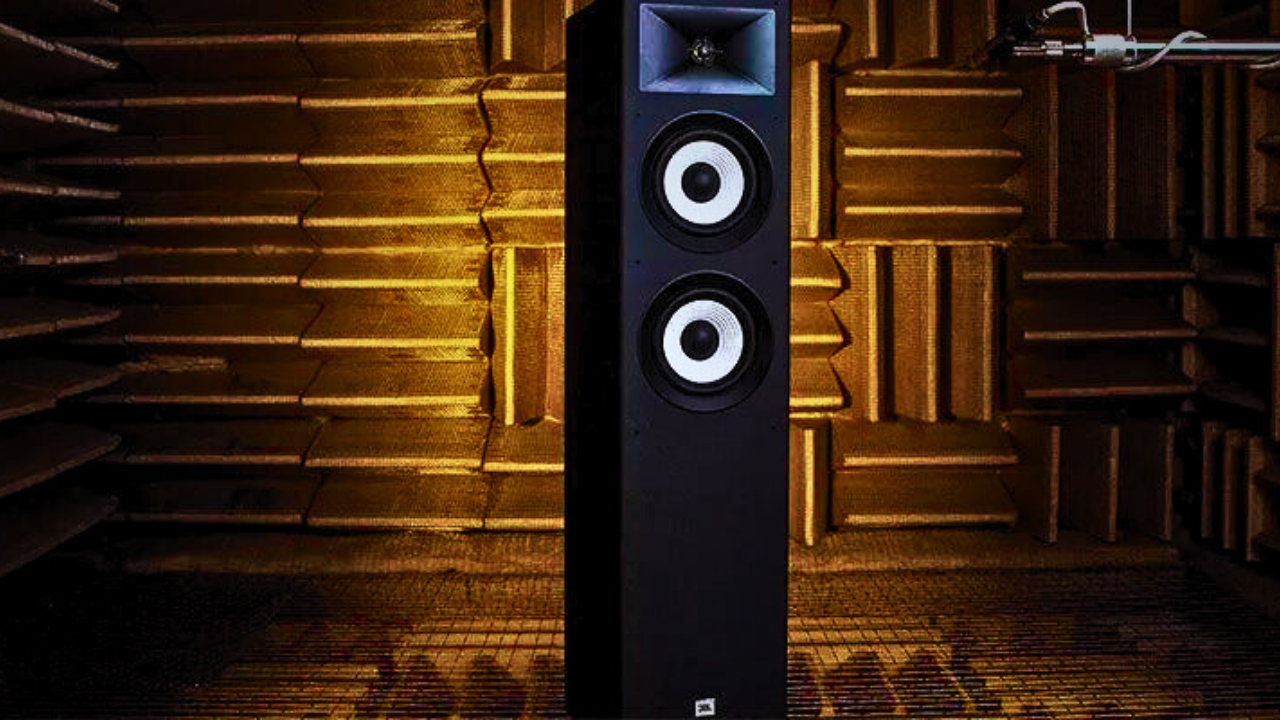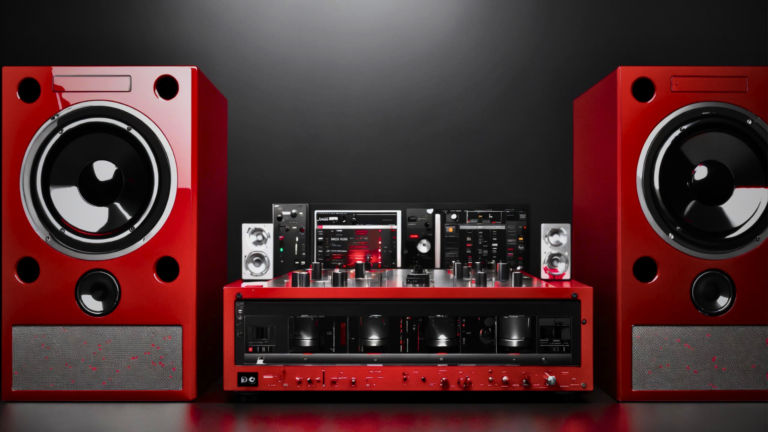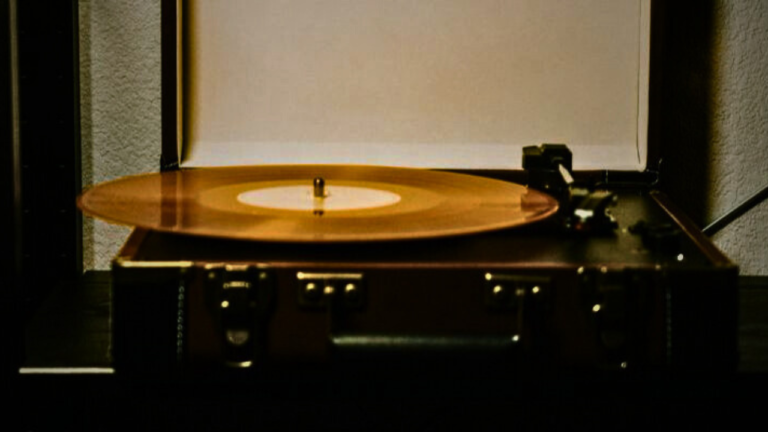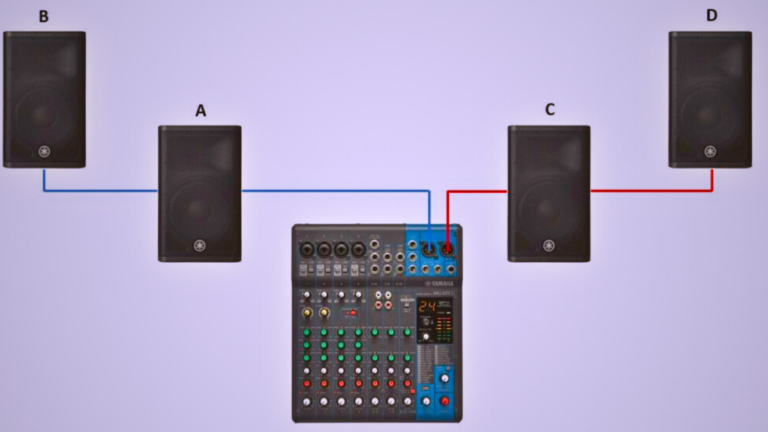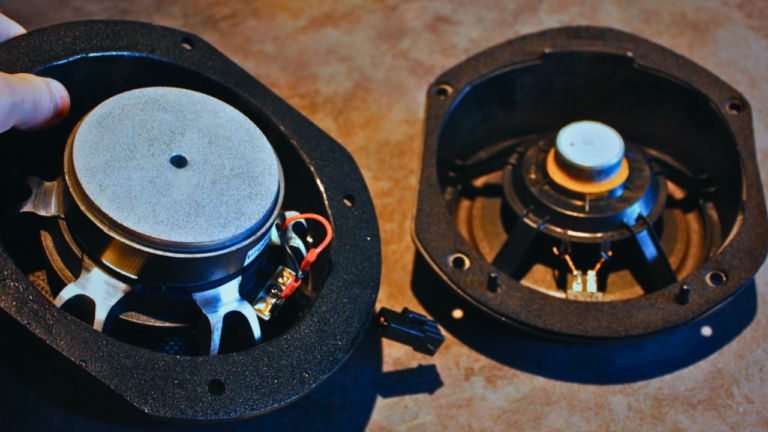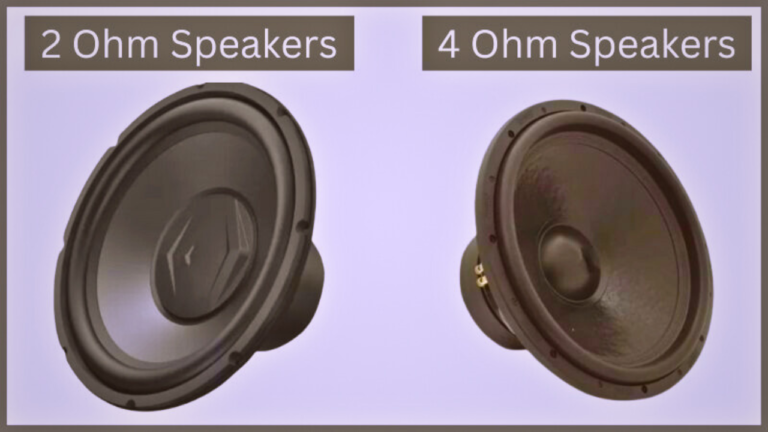How To Connect Multiple Speakers To Home Stereo?
There’s something uniquely satisfying about setting up your favorite tunes in your living space, isn’t there? But have you ever considered how incredible it would be to amplify that experience by connecting multiple speakers to your home stereo? Well, the great news is that it’s definitely possible, and that’s what we’re going to teach you to do in this article.
Before we dive in, it’s essential to understand the logic behind connecting multiple speakers to your stereo system. Achieving optimal sound distribution throughout your home requires a strategic setup, so stick with us as we explain all.
“Music is in tune with your domestic bliss.”
Why connect multiple speakers to your stereo?
There are several reasons you might want to push the boundaries of your existing sound system:
- Fuller sound: Multiple speakers distribute sound in a more dispersed manner, creating a fuller, immersive audio experience.
- Multiroom listening: Whether you’re hosting a party or simply want to enjoy your music from any room, having speakers set up throughout your house allows you to never miss a beat.
- Boosted volume: More speakers often equate to more volume, perfect for those who crave a cinematic sound experience at home.
Stay tuned as we delve into a detailed guide on how to make this wired wonderland a reality in your home.
Read also: How To Install Pyle Speakers?
What are the different types of home stereo systems?
Home stereo systems, often known as Hi-Fi systems, come in a wide array of styles and home stereo system capabilities come, each in an exciting way catering to a variety, and the unique set type you choose largely depends on your specific audio preferences and needs. It. Let’s get a basic understanding of a few of these different key types, as this can guide you in setting up and efficiently synergizing your multiple speakers.
So, let’s dive right in and explore the different types:
- All-in-One Systems: These systems include everything you need in a single unit: a radio tuner, a disc player (CD, DVD, or Blu-ray), and speakers. They’re convenient and easy to set up, making them a great option for those seeking simplicity.
- Shelf Systems: A step above all-in-one systems, shelf systems usually feature a receiver along with shelf-top speakers. They may include more advanced features, like dual cassette decks or a turntable.
- Mini and Micro Systems: The emphasis here is on compactness. Smaller than shelf systems, these still deliver a punch in terms of audio quality. They typically include a CD player, a radio tuner, and speakers, all housed in compact units.
- Component Systems: Also known as separates, these systems allow you to build your own unique audio setup. Each piece—the receiver, equalizer, phonograph, CD player, and speakers—is sold separately, allowing for maximum customization.
Each of these home stereo systems has its pros and cons, so the one you choose will depend on your individual requirements, such as the amount of space you have, your budget, and your usage preferences.
Regardless of the type of home stereo system you choose, connecting multiple speakers to it can significantly increase its sound capability and make for a more immersive audio experience. Let’s now move on to see how this connection is done.
What are the essential components required for connecting multiple speakers?
When you’re looking to turn your home into a mini concert venue with multiple speakers, there are a few key components you’ll need. These parts will ensure that your system is not only connected properly but also delivers the superior sound quality you crave.
- Speakers: The most obvious addition to the set is the speakers. You’ll require more than one speaker, as you’re aiming for a multi-speaker setup. The type, size, and power ratings will depend on your specific needs and the sort of stereo system you possess.
- Speaker Cable: Various speakers require diverse types of cables. The cable must be capable and compatible with your system and speaker. Bear in mind that cable length and thickness can impact sound quality.
- AV Receiver or Amplifier: This forms the hub of your speaker setup. It powers your speakers, connects to your audio sources, and enables you to control volume levels. Pay attention to the number of channels in the receiver—it should have enough to connect all your desired speakers.
- Audio Source: Your music player, laptop, TV, or any other device that outputs audio forms the source. The source device should have compatible outputs that connect to your AV receiver or amplifier.
- Speaker Switch: If your receiver doesn’t have enough connectors for all your speakers or lacks functionality to control them independently, you may require a speaker switch. This device enables you to control various speakers independently.
Having a clear understanding of the necessary components is your first step in setting up your multi-speaker home stereo system effectively.
What common challenges do people face when connecting multiple speakers?

Connecting multiple speakers to a home stereo system can seem like a daunting task, and truthfully, it does come with its fair share of difficulties. You might feel like you’ve entered a technical maze, but don’t worry, you’re not alone. Here are some common challenges that individuals face when connecting with multiple speakers:
- Impedance mismatch: The output impedance of your amplifier must match the input impedance of your speakers for optimal audio quality. This can be a tricky thing to understand and get right, especially if you’re a beginner.
- Overloading the amplifier: Hooking up too many speakers to an amplifier that isn’t robust enough can lead to damaging the system. To avoid this, ensure that your amplifier can handle the combined impedance of all your speakers.
- Incorrect wiring: If speakers are improperly wired, it can lead to phase issues that can ultimately degrade the sound quality. This issue usually arises due to negative and positive terminals being incorrectly connected.
- Technical skills: Setting up a multiple speaker system can be a technically challenging task. This is especially frustrating for folks who might not be as technologically inclined.
That being said, it’s important to note that most of these challenges can be overcome with proper knowledge and a little practice. So don’t let these hurdles deter you from your dream audio setup!
Read also: How To Avoid Blowing Speakers?
How does the arrangement of speakers affect the sound quality?
You might think that simply connecting your speakers and cranking up the volume is enough. But the truth is, the arrangement of the speakers significantly influences the quality of the sound you’ll experience. Understanding the principles of speaker placement can elevate your sound system from good to great. Let me show you how.
Firstly, stereo imaging. This is the technique of creating a spatial impression in sound reproduction. That is, making you feel as if musicians are performing in front of you. If speakers aren’t properly aligned, the stereo image can misplace the source of the sound. This results in a less immersive and engaging listening experience.
- Tip: For best results, position your speakers so they form an equilateral triangle with your listening spot. This can help create a balanced stereo image with distinct localization of individual sound sources.
Secondly, let’s talk about bass response. Speaker distance from walls can drastically impact the bass quality. If placed too close to a wall, the bass can become boomy and overpower other frequencies. Too far, and the bass might feel weak.
- Tip: Try experimenting with different distances. As a general rule, placing speakers about a foot away from the wall can provide a good balance.
Finally, room reflections. Sound waves from your speakers interact with the room, bouncing off walls, ceilings, and other objects. These reflections can either enhance or muddy the sound, depending on the room’s acoustics and speaker placement.
- Tip: If possible, place speakers away from walls and other reflective surfaces. Additionally, considering the use of acoustic treatments like diffusers or absorbers can help manage unwanted reflections.
In conclusion, the right arrangement of your speakers can provide a clear, balanced, and immersive sound experience. But remember, every room and speaker setup is unique. So, don’t be afraid to experiment until you find what works best for your space.
Quick Speaker Placement Guide
| Aspect | Tips |
|---|---|
| Stereo imaging | Position your speakers to form an equilateral triangle with your listening spot. |
| Bass response | Keep speakers about a foot away from the wall to balance the bass. |
| Room reflections | Place speakers away from walls and other reflective surfaces, and consider using acoustic treatments. |
What safety measures should be taken when connecting multiple speakers to a home stereo system?

When you’re setting up a diverse array of speakers with your stereo system, it’s critically important to consider safety first and foremost. The wrong approach can lead not only to poor sound quality but also to equipment damage or, in the worst cases, personal injury.
To ensure a safe setup, here are some pertinent guidelines to follow:
- Handle with Care: Be gentle when handling your speakers. Although they may seem sturdy, sensitive components are inside, and rough treatment may cause internal damage.
- Electrical Safety: Unplug all electrical devices in your system before any installation or adjustments. This reduces the risk of electric shocks. Additionally, keep water and other potential conductors away from your equipment to prevent short circuits.
- Correct Speaker Placement: Place your speakers securely on a flat surface to prevent them from falling. They should be away from the edge of the table or stand. For wall-mounted speakers, ensure they are attached according to the manufacturer’s instructions. Never hang speakers by the wire.
- Wire Management: Make sure not to strip too much insulation away from your speaker wires. An excess of bare wire can lead to short circuits if the wires cross. Also, ensure no frayed ends are present, as these can also cause shorts. Don’t allow your speaker wires to run under rugs or carpets where they can be stepped on or damaged.
- Impedance Matching: Use speakers with impedance that matches the amplifier’s output. A mismatch can result in poor performance and, in some situations, damage your amplifier.
By following these safety pointers, you help protect both your beloved audio gear and yourself, creating an environment in which you can fully appreciate the resounding beauty of stereo sound.
Remember, having a powerful sound system means nothing if it’s not functioning safely and effectively. Treat your stereo setup with the respect it deserves, and its melodious rewards will continually delight you.
Conclusion
There you have it: a comprehensive guide on how to connect multiple speakers to your home stereo system. It may seem like a challenging task, but with the right tools and a bit of patience, you’ll be able to fluently set it up.
Remember to always prioritize:
- Compatibility: Ascertain that your speakers and stereo are compatible.
- Placement: Optimum placement significantly influences the quality of sound.
- Safety: Safety should never be compromised. Make sure your setup is safe and does not pose a risk to your household.
With the help of this guide, you are now well equipped to venture into the world of multi-speaker setups. Delve into integrating different speakers, appreciate the depth of sound they provide, and transform your home into a unique sonic environment. You’re not just enhancing your sound system; you’re elevating your experiences, whether it’s immersing in your favorite music or engaging with the thrill of action-packed blockbusters.
It’s not the complexity, but the precision and understanding involved that takes your audio experiences to new heights. So go ahead, start your journey to excellent audio quality right at your home!
Remember, perfection comes with practice. Initially, the configuration may take time, and you might even encounter a few hurdles. But don’t worry; keep proceeding forward with patience, and soon you’ll be a pro at this.
Good luck, and let the rhythm guide you to high-grade sound dynamics!
Read also: How To Stop Car Door Rattling From Speakers?
FAQs
Can I connect two speakers to one output on my stereo?
Yes, it’s possible. You can connect them in series or in parallel. But remember, connecting more than one speaker to a single output may affect the sound quality or even damage the speakers or the stereo if not done correctly.
How can I improve the sound quality when connecting multiple speakers?
The key is proper speaker placement and balancing their sound levels. Also, use high-quality cables and connectors. High-performance speakers with superior audio quality also play a significant role.
What’s the difference between speaker impedance and sensitivity?
Impedance refers to the resistance a speaker offers to the current or voltage being applied to it. On the other hand, sensitivity refers to how loud a speaker sounds at a given input power. Both of these parameters play a crucial role when connecting multiple speakers.
Will connecting multiple speakers damage my stereo system?
Not if done properly. But improper connections, mismatched impedance levels, or overloading of power can indeed damage both the speakers and the stereo.
Can I connect speakers with different impedances to the same stereo system?
Yes, you can. But it’s important to ensure that the total load on the amplifier doesn’t exceed its capability.
Why is my stereo in ‘protect mode’ after connecting multiple speakers?
Most modern stereo systems enter ‘protect mode’ when there’s a possibility of damage due to mismatched impedance, low resistance, or overheating. Check your connections and settings.
Why is there low sound from one of my connected speakers?
It could be because of an issue with the wire connection, a problem with the speaker itself, or an impedance mismatch. Try swapping the speakers to isolate the problem.
Can I connect wireless speakers to my old stereo system?
Absolutely. You could use a wireless speaker kit or a Bluetooth receiver to make your old stereo work with wireless speakers.
I’ve connected two speakers, but I’m only hearing sound from one. What could be the problem?
It could be a faulty speaker wire or a defective speaker. Another reason might be improper balance settings on your stereo.
How do I know if my speakers are in phase?
If speakers are in phase, they work together, creating a fuller sound. When they are out of phase, they can cancel each other out. You can check phase by listening carefully; if the bass seems low or the sound isn’t full, your speakers might be out of phase. Another method involves using a polarity tester.

Hey there! I’m Henry Jack, the voice behind speakerrealm.com, your ultimate destination for everything speakers. Whether you’re a seasoned audio enthusiast or just starting to explore the world of sound, you’ve come to the right place.
At Speaker Realm, I dive deep into the realm of speakers, bringing you comprehensive reviews, insightful guides, and the latest trends in the industry. From floor-standing behemoths to compact bookshelf wonders, I cover it all.
I’m passionate about helping you find the perfect speakers to elevate your audio experience. Whether you’re setting up a home theater, upgrading your sound system, or just looking for some quality audio gear, I’ve got you covered.
But Speaker Realm isn’t just about technical specs and performance metrics—it’s also about the art and science of sound. I explore topics like acoustic design, speaker technology, and the impact of audio on our lives.
So whether you’re a casual listener or a hardcore audiophile, join me on this journey through the world of speakers. Let’s turn up the volume and explore the endless possibilities of sound together at speakerrealm.com!
